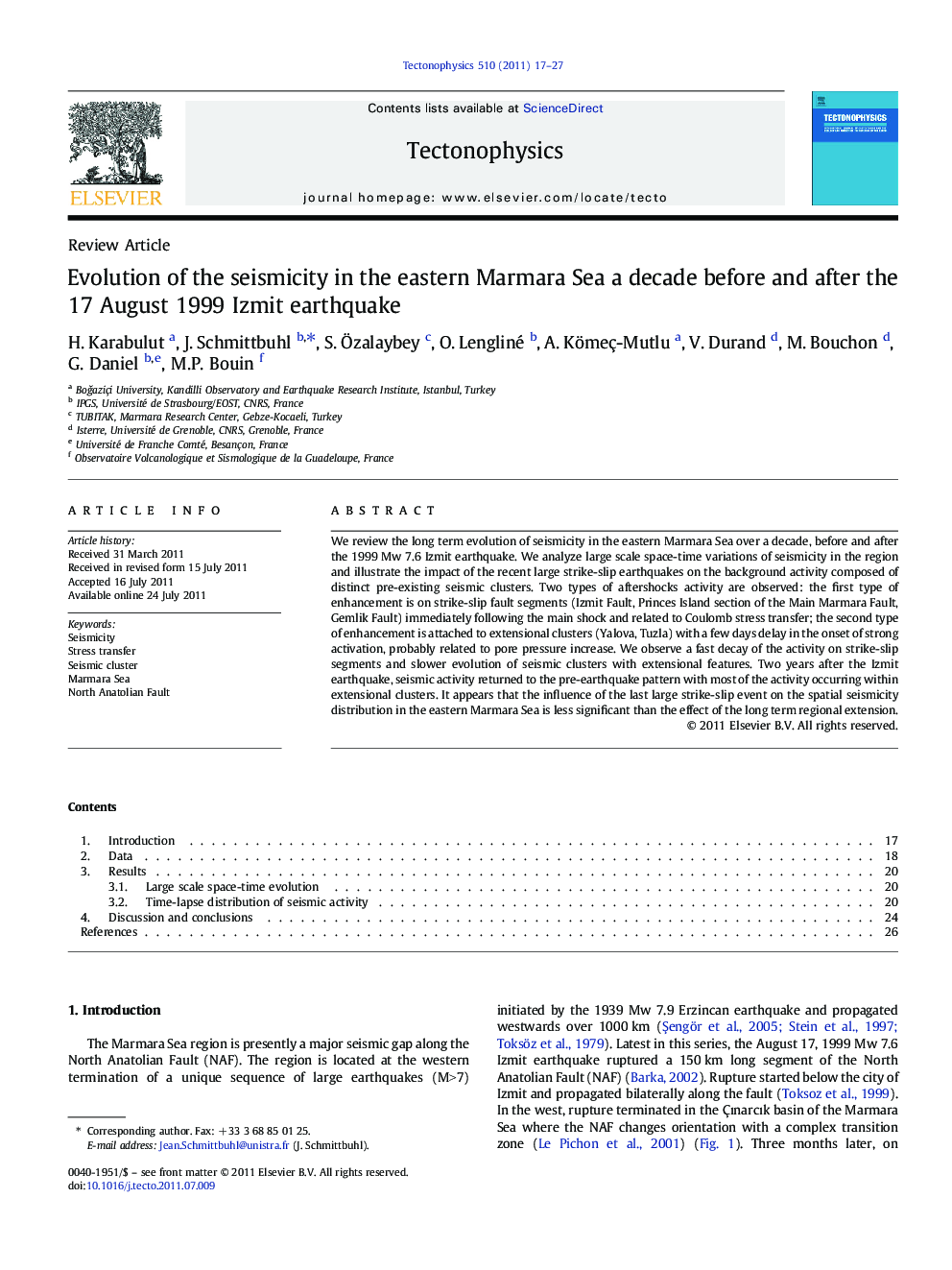| Article ID | Journal | Published Year | Pages | File Type |
|---|---|---|---|---|
| 4693054 | Tectonophysics | 2011 | 11 Pages |
We review the long term evolution of seismicity in the eastern Marmara Sea over a decade, before and after the 1999 Mw 7.6 Izmit earthquake. We analyze large scale space-time variations of seismicity in the region and illustrate the impact of the recent large strike-slip earthquakes on the background activity composed of distinct pre-existing seismic clusters. Two types of aftershocks activity are observed: the first type of enhancement is on strike-slip fault segments (Izmit Fault, Princes Island section of the Main Marmara Fault, Gemlik Fault) immediately following the main shock and related to Coulomb stress transfer; the second type of enhancement is attached to extensional clusters (Yalova, Tuzla) with a few days delay in the onset of strong activation, probably related to pore pressure increase. We observe a fast decay of the activity on strike-slip segments and slower evolution of seismic clusters with extensional features. Two years after the Izmit earthquake, seismic activity returned to the pre-earthquake pattern with most of the activity occurring within extensional clusters. It appears that the influence of the last large strike-slip event on the spatial seismicity distribution in the eastern Marmara Sea is less significant than the effect of the long term regional extension.
Research Highlights► We review the long term evolution of seismicity in the eastern Marmara Sea. ► Time window is ten year before and after the 1999 Izmit earthquake. ► The trace of the NAF from the seismic activity is poor before and ten years after the main shock. ► Seismic clusters are shown to be maintained on the long term. ► Dynamic stress transfer related to the main shock weakly affects regional seismicity pattern.
